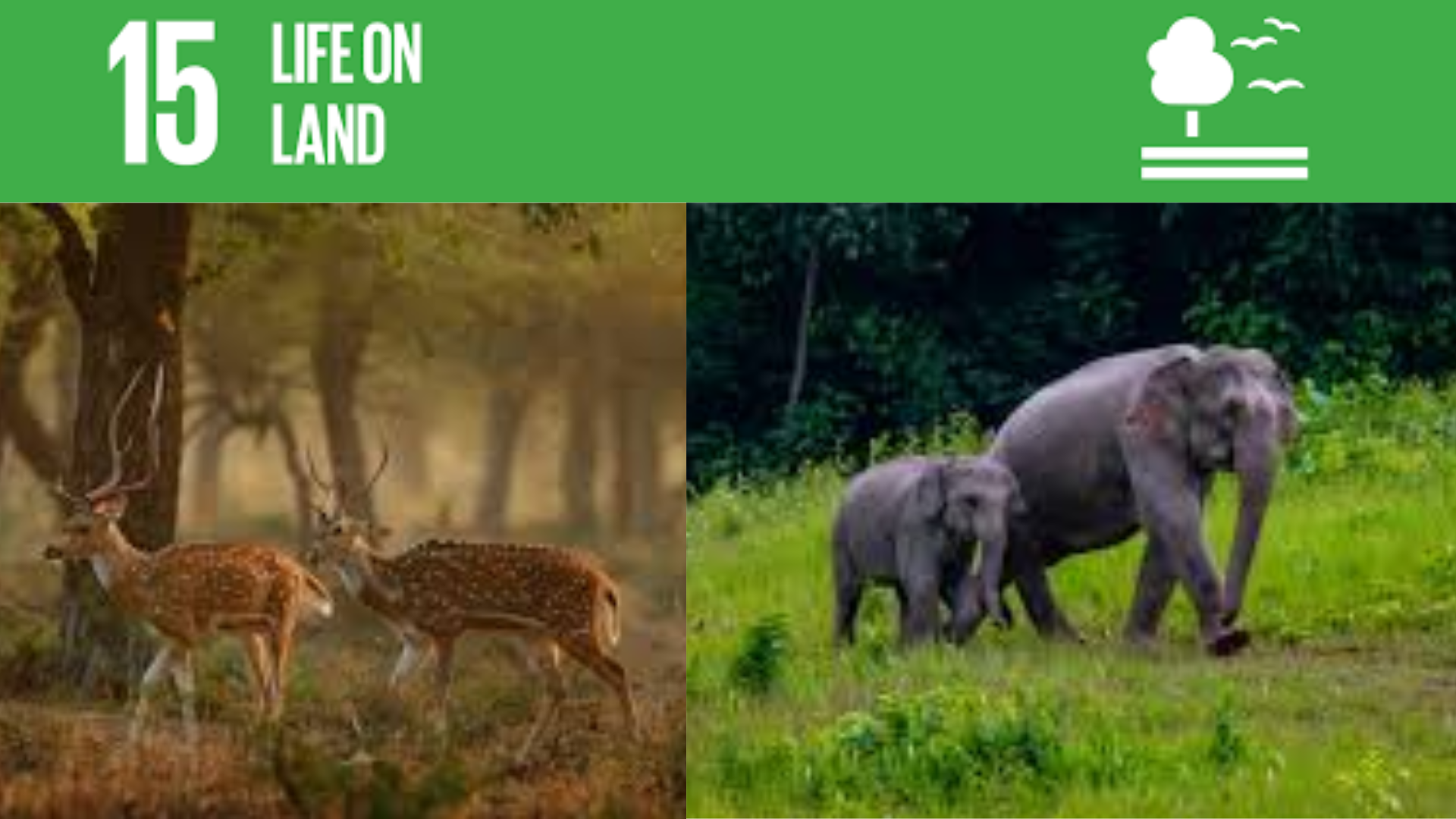🌳 SDG 15: Life on Land
Goal:
Protect, restore and promote sustainable use of terrestrial ecosystems, sustainably manage forests, combat desertification, and halt and reverse land degradation and biodiversity loss.
🌐 Why SDG 15 Matters
Land ecosystems are essential for human survival and well-being — they provide food, clean water, oxygen, and are home to 80% of all terrestrial species.
-
🌲 Forests cover about 31% of Earth’s surface and are vital for carbon storage and biodiversity.
-
🐾 1 million species are at risk of extinction, many within decades, due to human activities.
-
🏜️ Desertification affects over 3.2 billion people, especially in Africa, Asia, and Latin America.
-
🌾 Soil degradation threatens food production and water quality.
-
🌍 Biodiversity loss undermines ecosystems that support human life — including agriculture, medicine, and clean air and water.
-
⚠️ Human actions, including deforestation, pollution, poaching, and land-use change, are accelerating ecosystem collapse.
-
🔁 Restoring and protecting land ecosystems is key to achieving multiple other SDGs, including zero hunger, clean water, and climate action.
🧭 Key Targets of SDG 15
| Target | Description | Target Year |
|---|---|---|
| 15.1 | Conserve terrestrial and freshwater ecosystems, especially forests, wetlands, and mountains | Ongoing |
| 15.2 | Promote sustainable management of forests and halt deforestation | 2020+ |
| 15.3 | Combat desertification, restore degraded land and soil, and strive for land degradation neutrality | 2030 |
| 15.4 | Ensure conservation of mountain ecosystems | Ongoing |
| 15.5 | Take urgent action to halt biodiversity loss and prevent extinction of threatened species | Ongoing |
| 15.6 | Promote fair sharing of benefits from use of genetic resources | Ongoing |
| 15.7 | End poaching and trafficking of protected species | Ongoing |
| 15.8 | Prevent invasive alien species in ecosystems | Ongoing |
| 15.9 | Integrate ecosystem and biodiversity values into national and local planning | Ongoing |
| 15.a–c | Mobilize financial resources and enhance international support for biodiversity and ecosystems | Ongoing |
📊 Progress and Challenges
Progress:
-
🌿 Growth in protected areas, including national parks and conservation reserves.
-
🌲 Reforestation and afforestation projects underway in many countries.
-
📈 Expansion of data collection and monitoring on biodiversity.
-
📜 Adoption of global frameworks such as the Kunming-Montreal Global Biodiversity Framework (2022).
Challenges:
-
🌍 Biodiversity is declining faster than at any point in human history.
-
🐘 Illegal wildlife trade and poaching continue to threaten iconic species.
-
🪵 Deforestation rates remain high, especially in tropical regions.
-
🏜️ Land degradation affects 75% of Earth’s land area.
-
🧪 Chemical use, invasive species, and pollution continue to harm ecosystems.
-
💸 Funding gaps for ecosystem protection persist, especially in developing countries.
🧠 Who Is Involved?
-
Governments: Develop and enforce environmental laws and conservation programs.
-
UN Agencies: FAO, UNEP, CBD (Convention on Biological Diversity), UNCCD.
-
NGOs and Conservation Groups: WWF, IUCN, Rainforest Alliance, and others lead reforestation, habitat protection, and species recovery efforts.
-
Indigenous Peoples: Stewards of 80% of Earth’s remaining biodiversity — their rights and knowledge are crucial.
-
Scientists: Track biodiversity, study ecosystems, and develop restoration methods.
-
Private Sector: Adopt sustainable land-use practices in agriculture, mining, and forestry.
-
You!: Individuals help by supporting conservation, making responsible consumer choices, and protecting nature locally.
🌐 International Agreements Supporting SDG 15
-
Convention on Biological Diversity (CBD) – Global agreement to protect biodiversity and share its benefits.
-
UN Convention to Combat Desertification (UNCCD) – Focused on land degradation and desertification.
-
CITES – Treaty to protect endangered species from trade.
-
Forest Principles (Rio Earth Summit 1992) – Foundation for sustainable forest management.
-
Kunming-Montreal Global Biodiversity Framework (2022) – Sets global targets to halt biodiversity loss by 2030.
🧩 How You Can Help
-
🐝 Support biodiversity-friendly products (shade-grown coffee, sustainable wood).
-
🚯 Avoid single-use plastics and reduce waste to prevent pollution of habitats.
-
🌱 Plant trees, support reforestation, and care for local green spaces.
-
🐘 Don’t buy wildlife products (e.g. ivory, exotic pets, endangered plant items).
-
📚 Educate yourself and others on biodiversity and local ecosystems.
-
🍽️ Eat sustainably – reduce food waste, choose local and organic.
-
🧹 Volunteer with conservation projects and clean-up drives.
-
🗳️ Vote for nature-positive policies and support environmental organizations.

